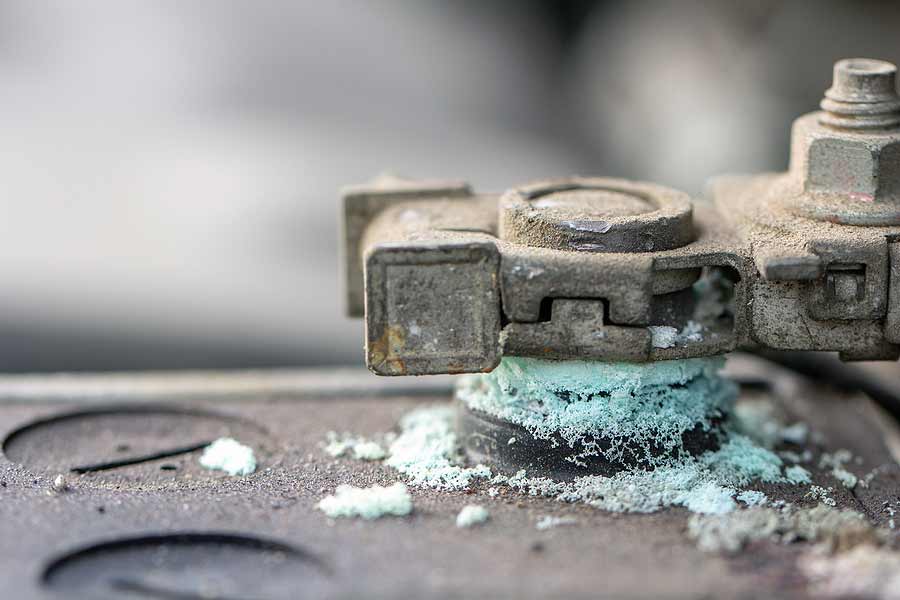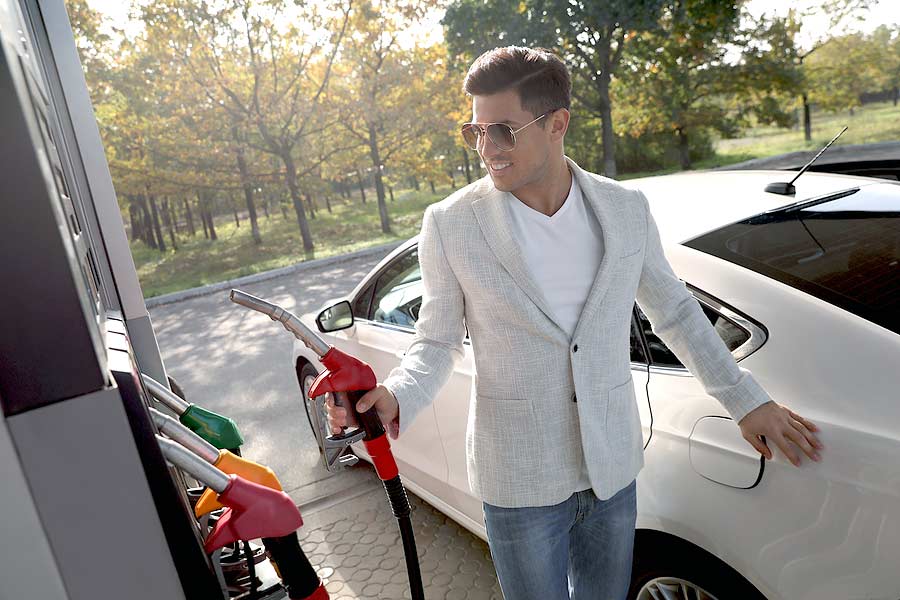
by Admin | Sep 5, 2022 | Auto Care Blog
Certainly, owning a car is a great experience but is never a bed of roses. It takes hard work to keep the vehicle on the road. Usually, you have to give the automobile some tender loving care, and it’ll reciprocate with reliability, convenience and enjoyable riding.
For example, don’t accelerate during start-up. To keep the engine in better shape, be gentle with the accelerator and often shift to neutral at a red light.
Treating your car better and acknowledging its limits will ensure the repair periods are few and far between.
Wash and Wax the Car
How the exterior looks is often a reflection of our personality, so you should keep it clean, shiny and free from rust.
Spilt beverages can be corrosive, and the dust particles can scratch the exterior or the interior. Vacuum the interior and use a soft, damp cloth on the dashboard and the plastic parts.
Waxing regularly protects the paint, creates a protective barrier against bird droppings, and slows oxidation. As much as possible, park in the shade as this avoids the UV rays that crack your paint job.
Regularly Change Oil and Filter
Changing the oil frequently flushes abrasive particles and dirt that can increase the engine’s wear. Don’t skip the oil filters as well, as they accumulate dirt and particles that blend with the new oil (you want to avoid this).
Regularly Check on the Battery
Some manufacturers claim the battery is maintenance-free, but you’ll still need to check on it regularly to prolong its life.
Keep the terminals clean with a damp rug and some detergent, and check for any signs of damage. Does the battery have any bulges and cracks? If it does, then it is due for replacement.
Maintain the Right Tire Pressure
Regularly checking the tire pressure and keeping it at the proper levels according to the manual recommendations is vital. Keep an eye out for uneven tire wear because it indicates wrong wheel alignment, even worn-out shock absorbers, tire damage, bent wheel or bad brakes.
Clean the Engine Annually
A clean engine is happy, so it runs smoother and cooler. You can quickly identify any leaks on the engine when it’s clean and have it fixed. While you can choose to clean your engine, letting a professional do it is preferable to prevent damage to the sensitive parts.
Change the spark plugs after the recommended mileage to ensure better engine performance and fuel mileage.
A professional vehicle repair and maintenance service on speed dial is vital to keep the vehicle functioning at its best. A1 Performance Auto Repair is the experts you need to handle your vehicle the way it deserves and keep it on the road for longer. Contact us today!

by Admin | Jul 5, 2022 | Auto Care Blog
A puddle beneath the car can be disturbing for new vehicle owners, but it’s not something to worry about in most cases. The culprit may be condensation from the exhaust or the air conditioning system.
Is the puddle around the rear of the engine compartment? If that’s the case, it’s likely from the AC condensation, an everyday occurrence and nothing to lose sleep over.
Alternatively, the water may be from exhaust condensation when the puddle is around the exhaust area. Don’t worry about it if it’s in small amounts.
When to Worry about Leaking Water from the Vehicle
Large clouds of white water from the exhaust may suggest the coolant has leaked into the combustion chambers and is burning together with the air-fuel mixture. This indicates a blown head gasket – something much serious and requiring a professional to fix.
If you suspect a coolant link before you set off for a trip across the state, check with your garage service first. But if the coolant levels are good, and it’s just some water under the rear of the engine compartment, it’s probably AC condensation and nothing to postpone your trip over.
Another possible cause of a leak is a cracked windshield wiper fluid reservoir. If water leaks into your windshield wiper fluid and freezes, the reservoir will crack and leak fluid. Often, the color of the leaking fluid is light green or light blue and likely settles around your front tires.
How Can You Be Sure It’s Water Leaking?
The leaking can be difficult to identify against a concrete background. So what do you do?
Place a piece of white paper under the leak and get a better picture. Does the fluid have any color? If not, then it’s just water. Probably AC condensation.
If your leak has some strange color, you have a leaking coolant on your hands. Your next step is to check how much coolant you have. Low coolant levels are a recipe for damage that costs you an arm and a leg – you don’t want it to come to this.
Get to a service center such as A1 Performance Auto Repair immediately to avoid further damage when you notice the fluid levels are low.

by Admin | Jun 20, 2022 | Auto Care Blog, Auto Mechanic, Uncategorized
Early discovery of transmission issues can save you big bucks in repair bills. Transmission failure is not hard to detect when you’re keen enough. Don’t wish the problem away when you notice something is amiss because it will not.
Visit your garage service when you notice any of the following symptoms.
Leaking Fluid
A pool of reddish fluid under your car is the most straightforward indicator of identifying a transmission problem. Let your mechanic know when the trouble starts, and they’ll check the transmission fluid level.
Burning Smell
A burning smell is a powerful indicator of something wrong with the transmission. The transmission may be overheating, or the transmission fluid may be burnt and old.
Dragging Clutch
A failure to disengage the clutch disc when you press the clutch pedal causes a clash of the gears. The leading cause of a dragging clutch is clutch misplacement and mechanical failure.
Difficulty in Switching Gears
When changing gears becomes a daily struggle, your transmission system is in the process of giving in. Sometimes, it could be you’re using the incorrect type of transmission fluid, or the transmission fluid is leaking somewhere.
Slipping Gears
A slipping transmission is dangerous and a telltale sign that the system is broken. A delay in acceleration and general harsh response when shifting gears and revving indicate slipping gears.
Sometimes, the gear change will be unresponsive when moving from park to drive.
Noises when You’re in Neutral
Weird noises when the vehicle is in neutral are not a good sign. At the minimum, it can mean the transmission fluid is overdue for a change, or the system needs a check by a professional.
Other strange noises such as humming, clunking and whining when driving are not good signs. Let a professional have their hands on it immediately.
A1 Performance Auto Repair can check your transmission and repair it if needed. We can also inspect for other problems and ensure your car is whole again for daily use.

by Admin | Jun 5, 2022 | Auto Care Blog
Tire safety is a crucial component of driving safely. If your vehicle seems shaky while driving, especially after striking a large pothole, you should schedule a tire service to ensure all is in working order.
If you are unfamiliar with the car maintenance lexicon, it may be difficult for you to differentiate between tire rotation and wheel alignment. Read on to learn more about the difference between tire rotation and wheel alignment to help make things more transparent and ensure that you schedule the correct tire service.
Tire Rotation
When driving, your vehicle may shimmy from side to side, indicating that it needs a tire rotation. Tire rotation involves moving tires from one position/side to another to achieve even wear.
Due to the varying degrees of friction on each tire, it can wear unevenly. Front-wheel-drive automobiles, for example, often have more wear on the front tires than rear-wheel-drive cars; rear-wheel-drive cars, on the other hand, have more wear on the rear tires. Uneven weight distribution can also cause uneven tire wear.
Rotate tires on a regular basis to ensure that they wear evenly.
Wheel Alignment
If your vehicle keeps sliding to one side while driving in a straight line, you may need to get your wheels aligned. The procedure of straightening your car’s front tires to ensure they match up with the back tires and steering is wheel alignment. When your automobile hits a large pothole while driving, it may cause wheel alignment concerns.
Unaligned wheels can cause uneven tire wear and impact your vehicle’s performance and ability to steer if left neglected.
Wheel alignments should be performed as soon as possible once a problem is detected.
For safe driving, bring your car to us over at A1 performance auto repair for comprehensive tire safety checks that include wheel alignment and wheel rotation. We assure you the best service if you do.

by Admin | May 20, 2022 | Auto Care Blog, Auto Mechanic
Gas prices are at an all-time high, and you want your car to get as close as possible to the manufacturer estimated gas mileage figures. Your car needs attention if it is not getting quite the miles-per-gallon it should be, or its fuel economy has reduced significantly.
Causes of Poor Fuel Economy
Low tire pressure is one of the most prevalent causes of poor fuel economy, and it is thankfully a simple fix. For every other fill-up, we recommend checking the air pressure in all of your tires (including the spare). Keep a tire gauge in your car and check the pressure while filling up your gas tank.
Your oxygen sensor could also be the source of the problem. If it fails, it might reduce your car’s fuel efficiency by 20%. Because a filthy or clogged air filter can cause the same problems, make sure to replace it at the specified mileage intervals.
Clogged fuel injectors can reduce fuel efficiency. The fuel injectors and spark plugs work together to ignite the fuel in your engine. Your fuel economy will suffer if you don’t change your spark plugs regularly. Spark plugs should be changed every 30,000 to 100,000 miles. This service is dependent on the make, model, and year of your car. Motor oil that is dirty or old might also be a problem. Your vehicle will run more efficiently if you maintain it regularly.
How You Can Help the Situation
You can also inadvertently impair your fuel efficiency. Operating your air conditioning during summer will reduce your fuel economy. If you are driving slowly, roll down your windows.
Driving at a slower speed saves you money on gas. Do not press the gas pedal to the floor, slam on the brakes, and repeat. This action decreases your fuel efficiency as well. Maintain a calm demeanor behind the wheel and be kind to your vehicle.
We recommend you bring your car in for a tune-up every two years for its first 60,000 miles and every year after that. Get your next tune-up done at A1 Performance Auto Repair. We would ensure that this is done professionally by offering you world-class services. Give us a call and be glad you did.

by Admin | Feb 20, 2022 | Auto Care Blog
One of the systems we take for granted when driving is a car’s braking system. The braking system is arguably the most critical safety system in any vehicle today. The braking system comprises various components that must work in sync to slow down or completely stop your car on demand when the brake pedal is depressed.
Most modern vehicles plying the roads today are equipped with disc brakes at the front and rear, with a few having the rear drum brake setup only. Regardless of the configuration, the principle of operation remains pretty much the same. Depressing the brake pedal displaces an incompressible fluid from the brake master cylinder through a circuit to the calipers (or pistons), which presses the brake pads (or brake shoes) against a rotor (or brake drum), using friction to slow down or stop the vehicle.
Maintaining Your Brake System
A lot is usually demanded from the braking system when you need to slow down or stop your car at a moment’s notice. Therefore, it is vital to periodically inspect and repair the brake system components like the master cylinder, brake pads, caliper, brake line, and brake rotors and ensure they are in working order.
Physical inspection of brake components like brake pads and rotors is vital, as these components deteriorate after a while and will require a replacement. Remember that wear and tear occur to these components due to friction. Routine checks are vital as per your vehicle service manual.
A consequence of an effective braking system is heat, and lots of it when the brakes are in use. This heat over time wears out the efficacy of the brake fluid and will attract moisture. This moisture can corrode the metal components of the braking system, reduce the boiling point of the brake fluid and ultimately reduce the overall effectiveness of your vehicle braking system. Your brake fluid should be inspected as per requirements of your vehicle manual and replaced/flushed when due.
Are you experiencing braking problems in your vehicle? Bring it over urgently to A1 Performance Auto Repair. Our Specialists and technicians will ensure you get the best automotive service experience.












